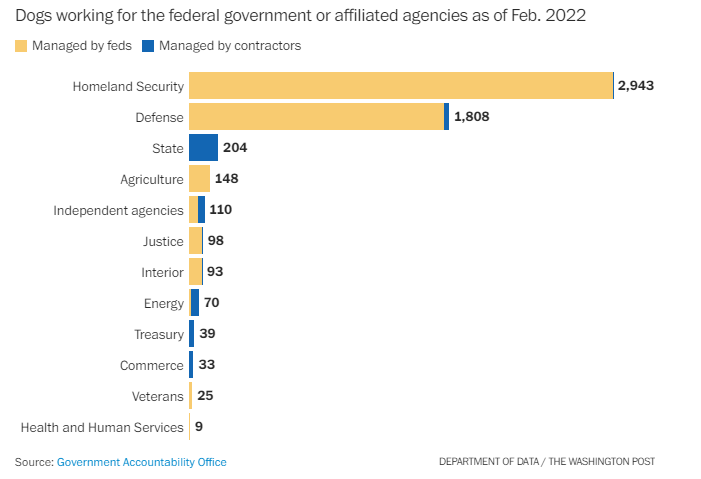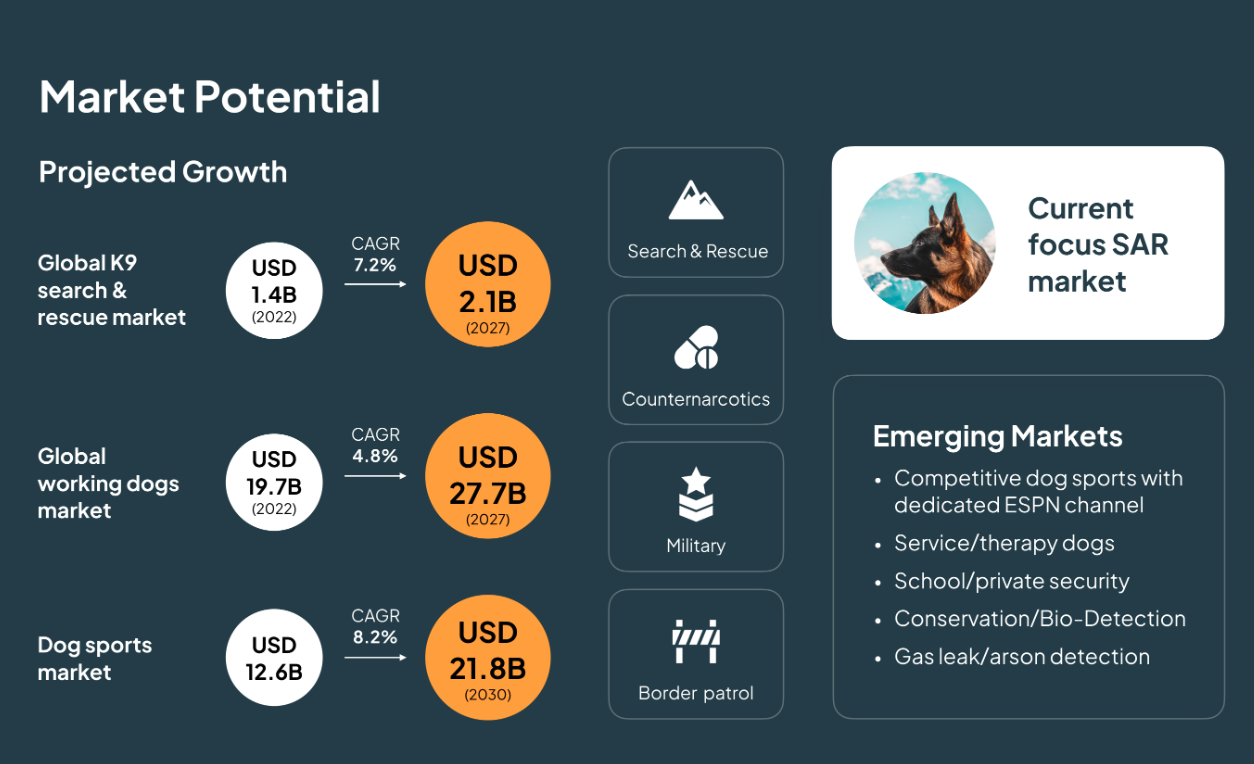- The Digital PawPrint
- Posts
- Canine intelligence unleashed
Canine intelligence unleashed
A look at the working dog world
Was this forwarded to you? Subscribe to receive future volumes!
📈 A bite-sized stat tastier than kibble
5,000+ dogs have full-time government jobs
The federal government employs 5,159 dogs and 421 as canine contractors, according to a 2022 study by The Washington Post. 85 percent work for the Department of Homeland Security and the Defense Department, performing tasks such as explosive and drug detection, patrolling federal wildlife refuges, tracking individuals, and apprehending suspects.

🐾 The purr-spective: Working dogs perform tasks that are either too dangerous, sensitive, or complex for humans, and their unique abilities enable more effective patrolling of borders, airports, and protected areas. We need them and their service. Not all dogs are FTEs and some are contractors!

🎾 What we’re chasing: New advances in pet tech
How DogBase is bringing AI and tech to elevate working dogs
Sponsored content
When training working dogs, many trainers still rely on outdated paper-based systems or, worse, nothing at all. That’s a big problem when we’re relying on these dogs to perform jobs and training becomes a slow and expensive process. The working dog market is a $50 billion industry, and it’s rapidly growing.
DogBase, a SaaS solution for canine units, is modernizing the way we train and manage working dogs by leveraging data and AI. DogBase takes a streamlined approach that provides actionable insights, improves working dog performance, addresses compliance issues, and ultimately saves both time and money.

We sat down with Almog to talk about DogBase’s intersection of pet tech, AI, and traditional industries like military and search and rescue.
The rise of pet biotech will extend your pet’s life
Loyal raised $45M to bring to market stand-alone veterinary drugs to expand the lifespan of dogs. Their LOY-001 injectable drug for large breeds reduces levels of GH/IGF-1, a hormone that reduces lifespan. Their next product is aimed at smaller breeds and will come to market in 2025.
It isn’t just for dogs, either. Cats may be able to live longer than dogs, and their lifespan may be getting even longer to 30 years. A Japanese scientist, Dr Toru Miyazaki has been tackling the silent threat that affects kitties: chronic kidney disease, which affects 1 in 3 cats.
🐾 The purr-spective: Not only do we want to see our pets live longer for our love of them, but from a cost perspective it makes sense. The pet pharma market has one distinct advantage through lower FDA regulatory hurdles. Drugs can reach the market in fewer years and cost a fraction of the $50M of clinical testing and approval costs needed for human drugs. Also, there are learnings from pet medicine that can be applied to human medicine.
The Global Pet Expo highlights new pet care categories
The Global Pet Expo 2024 in Orlando featured new categories such as farm and feed, modern pets, pet sustainability, pet tech innovation, and environmentally friendly, with over 3,000 new product launches.
🐾 The purr-spective: We continue to see the hyper-humanization of our pets, and this was ever-present at the Expo. The modern pet category explored what we’re feeding them and the products coming to market, like gelato and gourmet food toppers such as honey-glazed carrots.
And pet health is always a pivot part of pet events. While food solutions were proposed, two exciting developments are around sustainable insect proteins with anti-microbial effects and the expansion into dental chews for cats. What’s next: leaves and compost products turned into dental formulas?

Makes you wonder...
Could your dog be an assistance dog? Your smart toy already knows
A study by Canine Companions for Independence and Jackson found that by observing how a dog interacts with smart toys, collecting sensor data, and developing classifiers that correlate the sensor data to the success (or failure) of assistance dogs, they can predict with 90% accuracy which dogs are going to make it through a program and which dogs are not.
🐾 The purr-spective: We’re facing a global shortage of assistance dogs and volunteers to care for those in training, which could severely impact people with disabilities who rely on service dogs. A majority of service dogs are trained through registered organizations, but in the U.S. and some other countries, owners can train their dogs through a vigorous training regimen. Being able to predict if a dog will make it through training by looking at data from smart toys could help solve the shortage.
IKEA launches a new pet-friendly collection
IKEA's new pet product line highlights that replacements don’t have to break the bank. IKEA is aggressively going after the pet owner audience. With the launch of the new UTSÅDD line of pet beds, blankets, food bowls, toys, tools, and decor, the home design giant is looking to become the “be-all, end-all” spot for pet owners to outfit their homes for them and their four-legged family members.

🐾 The purr-spective: As people are spending more of their budgets on pets, companies adjacent to the pet industry are creating products to get a share of people's pet ownership wallets. IKEA isn't the only one: Zara Home and Gucci launched their pet lines a few years ago. PetSmart is now getting into pet home furniture. And ButcherBox launched a pet line. What will be next?

A new treat of resources

Missed the previous volumes and articles? Check them out!
Dogs aren’t just property, they’re family |  CES 2024: 11 Exciting pet tech innovations to keep an eye on |
